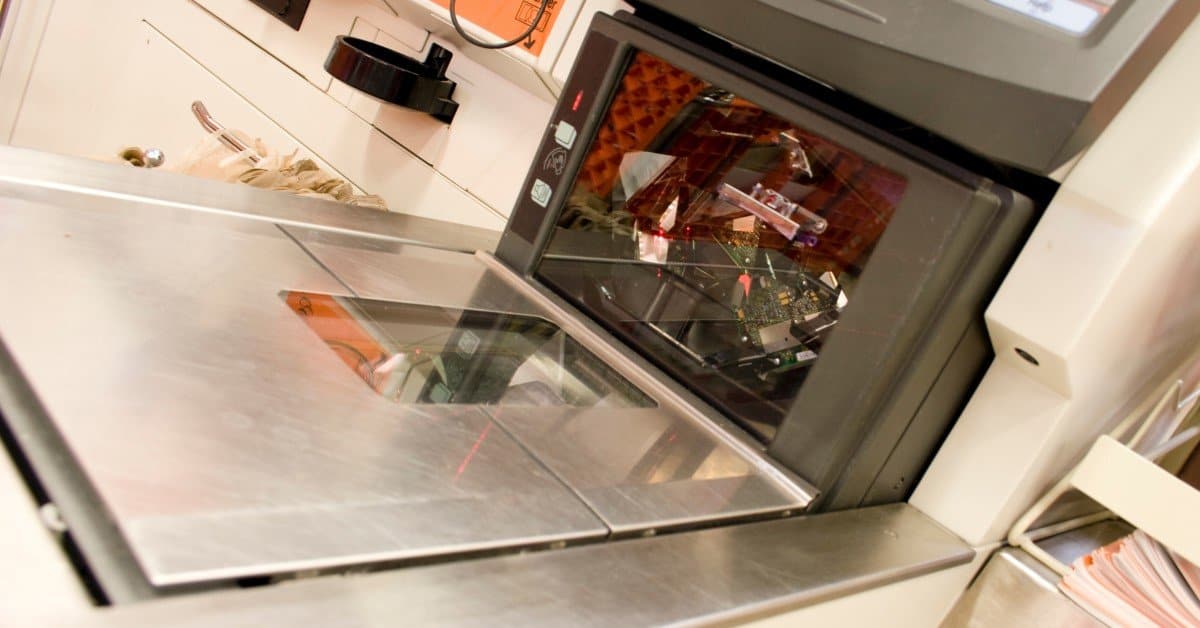Is Self-Checkout at Grocery Stores Worth It? (Yes, Here’s Why)

Self-checkout has been around for a while, and most grocery chains embraced the technology by implementing it at their stores. The main premise of self-checkout is convenience and speed, but is it worth using, and does it save you time?
According to a survey from Consumer Reports, 73% of participants who used self-checkout at grocery stores saved time. These participants used self-checkout at least once in the past year.
Consumer Reports’ survey also revealed other interesting findings. Participants’ top three complaints about self-checkout were the insufficient number of lanes, other customers taking too long, and lack of a store associate to resolve a problem.
These complaints can make or break the overall self-checkout experience. So, I put together eleven ways to help you (and others) save time using self-checkout lanes!
11 Hacks to Save Time at Self-Checkout
I use self-checkout at grocery stores all the time. I have to admit I made some rookie mistakes in the past, but once you know the do’s and don’ts, it can save you quite a bit of time.
So here are my self-checkout hacks that will make your experience a breeze!
1. Limit Purchase to 15 Items or Less
The main reason for using self-checkout lanes is to save time.
If you have more than 15 items in your shopping cart, you’ll most likely spend more time scanning and bagging each item than going through the regular checkout.
So, use self-checkout lanes if you have 15 or fewer items in your cart, and for all other instances, use the cashier lanes.
2. Skip Self-Checkout If You Need Store Verification
If you have any age-restricted items in your cart, such as alcohol or tobacco products, skip self-checkout and go through regular checkout.
Grocery stores have to verify your ID to complete the purchase of age-restricted items.
When you scan these items, self-checkout machines stop the process and announce “Assistance Needed.”
It may take a while for the store associate to show up and verify your ID, and you’ll hold up the line.
You should also skip self-checkout if you’re purchasing items that require activation, such as gift cards.
Self-checkout lanes are meant for customers who don’t need assistance from a store associate to complete their purchases.
3. Skip Self-Checkout If You Have Coupons
Another instance of skipping the self-checkout is when you have coupons.
In most cases, self-checkout machines need a store associate to verify scanned coupons.
It means the store associate has to log into the system and approve them manually.
There’s usually one store associate responsible for multiple machines, and it may take a while until you get assistance.
It’s best to avoid self-checkout lanes if you’re using any coupons.
4. Confirm If You Have Your Own Bags
Most grocery stores charge for plastic bags or eliminate them entirely. Plastic bags are not good for the environment, and the best alternative is reusable grocery bags.
If you’re using your own reusable grocery bags, make sure to enter that information on the self-checkout screen.
There’s usually an option you can select on the first screen to notify the computer that you brought your own bags.
It informs the machine that you’ll place your bag in the bagging area to avoid announcements like “Unexpected item in the bagging area.”
Self-checkout machines are equipped with cameras, sensors, and sensitive scales that can track foreign objects.
5. Scan Items in Order
One great way to save time while using the self-checkout is to scan items in the order you want to pack them.
I pack my produce, canned products, and frozen goods in separate bags, so scanning them in order helps me pack them quicker.
6. Avoid Distractions
Self-checkout lanes are not the place for multi-tasking. The more you focus on the job, the quicker it’ll get done.
Talking on the phone, texting, or posting on social media while scanning items slows you down and the customers behind you.
It’s also important to check prices as you scan items and put the weighed items, like produce, on the right part of the scale.
7. Mind the Barcode Scanner
Self-checkout machines have two barcode scanners – one facing you under the screen and the other one on the scale.
Depending on where the barcode is on the package, you can use either one.
It’s easy to rotate packaged goods like chips, snacks, or sodas to face the barcode reader.
But if you have store-made meals or foods that can be easily spilled, you should pay attention to aiming them at the appropriate scanner to avoid any accidents.
8. Enter PLU Codes for Produce
Scanning produce at the self-checkout requires some extra work and is probably the most challenging part.
First, you need to find the right item on the computer screen. There are many different types of apples, peppers, or tomatoes, so searching by name is not the most efficient way.
Instead, you should enter the PLU code stickered on produce items.
PLU codes are unique numbers, so it helps the system correctly identify the item you’re purchasing.
After entering the PLU code, put the item on the scale, and the computer will calculate the total price.
9. Keep the Bagging Area Clear
As mentioned previously, self-checkout machines have sensitive equipment such as sensors, scales, and cameras.
It would be best to keep the bagging area clear of foreign objects to not interfere with the machine.
Keep your personal belongings, such as your purse, away from the bagging area to avoid announcements like “Unexpected item in the bagging area” or “Please remove the item from the bagging area.”
The machine thinks that you didn’t scan an item and take it away. It just slows down the whole process and brings in unnecessary attention.
10. Divide and Conquer
The fastest way to go through a self-checkout lane is with teamwork! If you have a shopping partner with you, you can divide and conquer the work.
On a standard self-checkout machine, one person can take items from the cart, and the other can scan and pack.
If you’re using a machine with a conveyor belt, one person can unload the cart and scan it, and the other one can pack them for a speedy checkout.
11. Be Prepared to Pay
Payment is the last step to complete the process, but I’ve seen people doing everything right up to this point and slowing down at this stage.
People tend to count the exact change or find their credit card or try to figure out the mobile payment apps and QR codes.
The best strategy to complete the payment fast is to decide how you’ll pay in advance and be prepared for it!
Conclusion
There are grocery chains that take self-checkout to the next level. For example, Sam’s Club launched the Scan & Go app, allowing customers to scan each item using their phones and show the receipt to an associate on the way out.
NCR company which makes most grocery stores’ self-checkout machines, recently launched the new NCR Emerald platform. It is an integrated solution for stores to manage their promotions, merchandising, and payments more effectively.
Innovative ideas like the Scan & Go app and smarter machines improve customer satisfaction and reduce the time spent at self-checkout lanes.
Overall, using the self-checkout will save you time if everything is done right. So, give it a try next time you go grocery shopping, and make sure to follow my recommendations!
Related Articles:
How Do Grocery Stores Verify Checks? (And If They See Your Balance)
What Groceries Should You Buy for Your New Home? (With Printable List)

